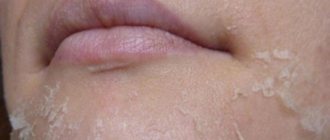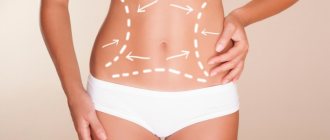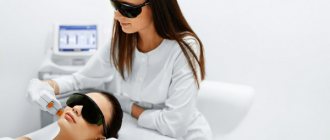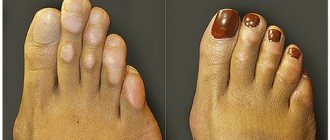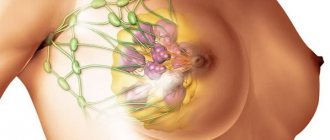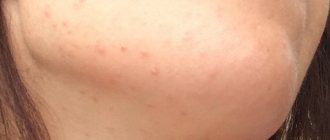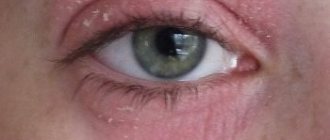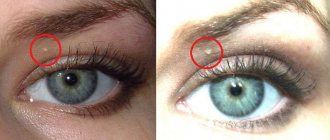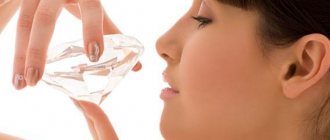The condition of the face in the first days after acid exfoliation often frightens patients: especially those who decide to undergo such cleansing for the first time. The main reasons for fear are “I burned my skin” and “this will never go away.” What to do if a burn appears after peeling? Which fears are justified and which are not?
NORMAL OR SIDE EFFECT
Any chemical exfoliation is effective, essentially, because of the burn.
Exfoliants contain various acids that act, depending on the type of cleaning, on the upper or middle layers of the skin.
In the process of exposure to reagents, tissues are renewed: keratinized cells are exfoliated, blood microcirculation improves, and the synthesis of collagen and elastin is accelerated.
These goals can only be achieved by using the correct concentration of acids and following cleaning techniques.
If the exfoliant is too aggressive or is left on the skin for longer than necessary , the chemical burn will move from the category of normal phenomena to the category of medical problems.
Only a slight first-degree burn provides a positive cleaning effect. More severe forms can cause significant harm.
Normal effects of cleaning with acids:
- Peeling that goes away after a few days;
- Mild swelling;
- Itching.
That is, the feeling of tightness, as well as itching and tingling associated with peeling, is not a cause for concern.
If after peeling there is a strong burning sensation, blisters have formed, and any touch to the face is painful, we are talking about a more serious chemical burn.
Abnormal consequences:
- Infections;
- Pigmentation;
- Scars.
Risk of severe chemical damage
Experts distinguish 4 degrees of burns , which are characterized by various tissue damage:
- A first-degree burn involves redness and mild swelling: such a reaction after a chemical peel is considered normal.
- The second degree is characterized by the appearance of blisters filled with a yellowish liquid: over time they burst.
- In the third degree, the skin dies and scabs form.
- In the fourth degree , both the dermis and muscle tissue are affected, and in complex cases, even the bones.
We recommend: TOP 10 PHARMACEUTICAL PRODUCTS AFTER PEELING (Bepanten, Panthenol, etc.)
With chemical peeling there is a risk of getting damage of any degree. Therefore, acids should be treated with caution.
Mistakes when cleaning at home are fraught with consequences, including serious injury. That is why it is better to carry out the procedure with a specialist.
General recommendations from cosmetologists
Typically, skin care after chemical peeling is discussed individually by a cosmetologist. It consists of many factors
The depth of exposure, the characteristics of the skin and the health of the patient are taken into account. However, there are general recommendations after facial peeling that can be called universal.
During the day after exfoliation, you cannot:
- Wash your face with soap, foam or gel;
- Touch, massage, rub, scratch the skin;
- Use moisturizing creams, nourishing serums, mattifying masks or lotions;
- Stay outside for a long time and come into contact with the sun's rays;
- Swim in the pool, take a steam bath, engage in active sports;
- Visit the solarium.
The next three days after exfoliation it is recommended:
- Wash your face with water with a slightly acidic pH or using a hypoallergenic, lightweight cleanser;
- Apply cream after peeling for the face with a wound healing effect. They usually contain panthenol or lanolin;
- Limit going outside, especially in sunny weather;
- Use products with a UV filter (SPF index - at least 35);
- Protect the skin from negative external factors: frost, wind, dust, sun.
For two weeks after exfoliation, you should adhere to the following recommendations:
- Use medications and creams prescribed by a cosmetologist;
- Refrain from using decorative cosmetics that clog pores;
- Do not remove scales, crusts, or scabs with your hands;
- Do not use scrubs, even the most delicate ones;
- Do not sunbathe in a solarium or in the sun, use sunscreen;
- Do not experiment with new brands of care cosmetics;
- Do not visit public baths, swimming pools, or open water bodies.
You've probably heard a lot of advice from friends and acquaintances on how to care for your face after chemical peeling, but you should only follow the recommendations of experienced cosmetologists. They will protect you from negative consequences in the form of complications and side effects.
WHAT TO DO TO SPEED UP HEALING
To speed up the healing process of a facial burn after peeling, in addition to standard care, you can use a number of medications:
- antihistamines, which should be prescribed by a doctor,
- medicinal ointments,
- creams and various masks.
When choosing medicinal and cosmetic products, you need to carefully study their composition.
Preference should be given to those that provide hydration, promote regeneration, and have a calming and antibacterial effect.
To speed up recovery, you need to follow a number of general rules :
- Avoid mechanical influence. When peeling, it is strictly forbidden to use scrubs or try to tear off the burned area of skin.
- Use disinfecting ointments. Healing may be delayed due to infection, so damaged areas of the epidermis must be regularly treated with antiseptics.
- Maintain water balance. Moisturizing the affected areas with cosmeceuticals and drinking plenty of fluids will help.
- Avoid sudden changes in temperature . Cold wind or scorching sun are stress factors that slow down the healing process.
- Do not overdry the epidermis. During the post-peeling recovery period, it is PROHIBITED to use drying creams, aggressive foam washes and soaps containing sulfates.
Also on topic : FACE AFTER PEELING: 6 questions for a cosmetologist
How long do burns last?
The speed at which the epidermis recovers after exfoliation depends on the type of cleansing:
- If we are talking about superficial effects , the epidermis is restored in a matter of days.
- Exfoliation after a midline chemical peel requires more time for regeneration from the burn. Peeling can last from 1-2 days to a week, but its completion does not mean that the tissues have completely recovered. This process usually takes 2-4 weeks.
Serious injuries associated with violation of the rules of the procedure must be treated under medical supervision.
Restoration of the dermis can take from several weeks to months.
PRECAUTIONARY MEASURES
Exfoliation acids are serious allergens . It is worth finding out in advance whether there is a possibility of side effects due to a reaction to the components of the exfoliant
Ignoring precautions can significantly aggravate the situation with facial burns after peeling: allergies lead to swelling, redness, itching and rashes. You will have to fight them with the help of antihistamines, and the healing process will be delayed.
We recommend: BODY TANING AND PEELING. TOP 3 recipes before tanning
You also need to prevent allergies to cosmetic and medicinal post-procedure care products. The body's reaction to such creams and ointments is also checked by testing on the bend of the elbow.
Even if, during testing, exfoliants caused only mild redness or rash, you should discard them: an allergic reaction on an already damaged face will be much more noticeable.
Health Hazard
Burns resulting from peeling can lead to serious problems associated with the condition of the epidermis. Their danger is as follows:
- Risk of infection. A burn contributes to the violation of the integrity of the skin, as a result of which harmful microorganisms begin to actively multiply in this place. Severe rashes and ulcers appear on the face, which can only be eliminated with the help of antibiotics.
- Acid compounds are usually used to lighten the skin and remove freckles and various blemishes. In this case, you need to take into account that if sunburn occurs, pigmentation will spread throughout the entire face, and it will not be easy to remove it.
- Skin restoration is often accompanied by the formation of scars. They usually appear in areas with cracks and deep creases. Getting rid of scars will require significant time and financial investment.
We recommend: Why did acne appear after peeling and how to get rid of it? Treatment and prevention
EXTERNAL MEDICATIONS FOR BURNS AFTER PEELING
It is better to find out how to treat burns at a consultation with a dermatologist: there are many drugs on the market that are positioned as ointments for treating burns.
The following pharmaceutical anti-inflammatory drugs have proven their effectiveness :
Panthenol
Products based on dexpanthenol stimulate regeneration and also increase the density of collagen fibers. The most popular trade name of the drug is Panthenol. The cream is applied up to 4 times a day.
Elokom
Medicines containing mometasone provide an anti-inflammatory effect and relieve itching. These include Elokom, which is presented in the form of cream, ointment and lotion. Apply a thin layer to the affected areas once a day.
"Panthenol"
This is the most famous and effective remedy for the rapid treatment of burns, injuries and abrasions. It stimulates natural regeneration processes, relieves pain, eliminates inflammation and itching. Panthenol anti-burn spray is recommended if side effects of different types of peeling occur. The peculiarities of this drug are that it not only has a therapeutic effect, but also moisturizes and softens the skin.
Customer reviews show that this is the best and most effective remedy for rapid skin regeneration in case of any damage. It does not cause discomfort, relieves discomfort, is easy to use and has no side effects. That is why this substance is in demand among manufacturers of caring cosmetics and is one of the components of creams for the face, hands and body.
FOLK RECIPES FOR BURNS
The burn after peeling will go away faster if the treatment is comprehensive. In addition to using the right cosmeceuticals, you can resort to traditional methods to speed up the process.
Vegetable mask
Grind half a fresh cucumber and 1 medium potato, finely chop a couple of sprigs of parsley. Mix the ingredients, add a teaspoon each of aloe and lemon juice, as well as a tablespoon of olive oil. Apply the mixture for 15 minutes and then rinse thoroughly with warm water. You can repeat the procedure twice a week.
Oatmeal decoction
A thick decoction is prepared from half a glass of oatmeal. Then two tablespoons of potato starch are added to them. Apply the finished mixture for 15 minutes. You can repeat the procedure every 2 days - the decoction softens the skin and speeds up the exfoliation process.
HOW TO TREAT A BURN FROM DIFFERENT PEELINGS
Methods for restoring the epidermis are generally similar. To prevent mistakes, you need to consider what exactly should be included in exfoliants.
Glycolic
Glycolic acid is one of the most gentle, so its concentration in cosmetic products ranges from 40 to 80%. Exceeding this norm is fraught with serious burns, but applying several layers of the reagent is acceptable. In this case, the entire procedure, together with pre-peeling preparation and acid neutralization, should take 20 minutes.
We recommend: 5 ways to overcome PELLIFIING AFTER PEELING
MEDIDERMA GIGI with retinol MEDICCONTROLPEEL
Salicylic
Salicylic acid is more aggressive, so its concentration can reach a maximum of 20-25%. A solution of 15% is also used - it is suitable for surface cleaning. Exposure time is maximum 20 minutes. This acid is incompatible with zinc oxide and resorcinol, so before and after the procedure you should avoid medications containing these ingredients.
Coral
Coral and other types of mechanical exfoliation by themselves do not lead to burns, only the symptoms are similar. However, mechanical damage to the epidermis is treated with the same anti-burn external medications.
In topic : 50 SHADES OF RED | What to do if your face is RED after peeling?
TREATING THE CONSEQUENCES OF BURN FROM PEELING
To prevent complications, the cosmetologist must carefully examine the condition of the skin in advance, select the correct acid concentration and mechanical cleaning technique.
Swelling from a burn after peeling
Swelling often occurs after exfoliation with trichloroacetic acid (TCA) and mechanical cleansing. This is due to the aggressive effect on the blood vessels adjacent to the surface.
Such swelling appears gradually - sometimes it appears only on the third day after the procedure. Preparations based on Depanthenol help in the fight against them.
Reasons for appearance
In the process of removing the stratum corneum of the skin, the active substance has a negative effect on the healthy epidermis, resulting in a burn. There are several types of burns that appear after this procedure. They all have the same reasons for their origin, for example:
- individual intolerance to certain components of the cosmetic composition;
- cleaning in the presence of open wounds on the skin;
- ignoring the safety rules specified in the instructions;
- low qualifications of a cosmetologist;
- high concentration of active components (more than 30%);
- exceeding the recommended holding time;
- using a cosmetic composition that is not suitable for a specific skin type.
Skin procedures require strict adherence to all recommendations, as well as the professionalism of the specialist, who is able to accurately assess the condition of the skin in order to select the appropriate composition.

